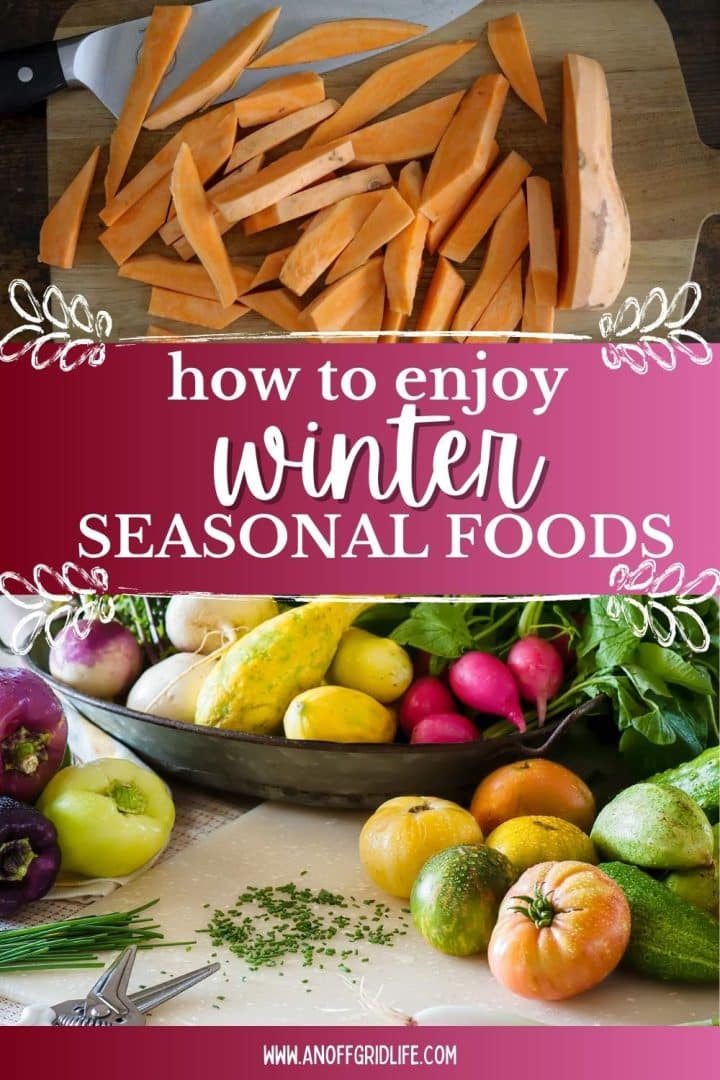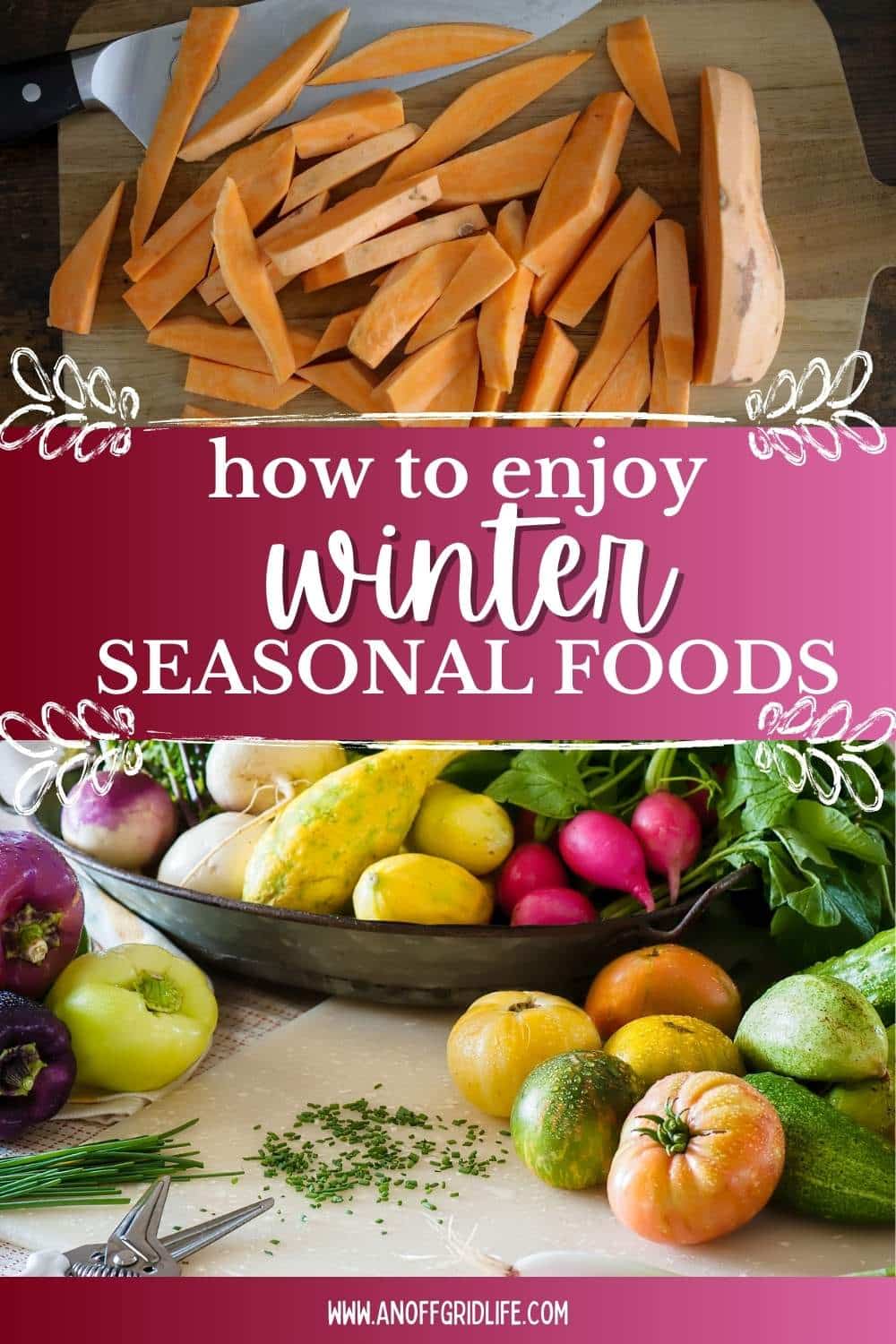Even in winter, it's possible to embrace seasonal eating. Enjoy winter seasonal foods and unlock the secrets of delicious and nourishing meals with the best of the winter season.
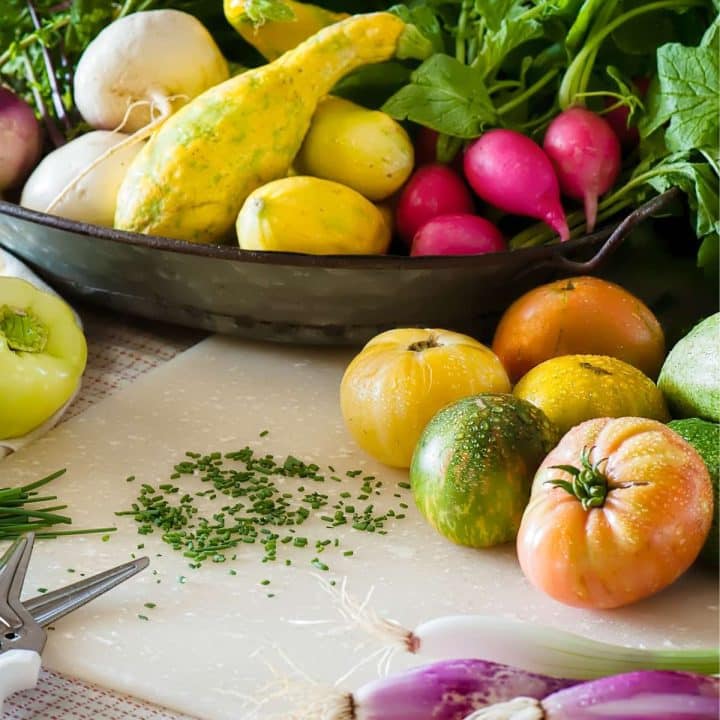
Finding abundance in scarcity
We live in a world where year-round produce availability has become the norm. Yet embracing seasonal eating is a return to the rhythm of nature.
It involves savoring locally grown, in-season foods at their peak. It includes preserving them when abundant.
Seasonal eating celebrates the ebb and flow of nature’s bounty. And it recognizes that each season brings unique flavors and culinary opportunities.
By choosing to eat with the seasons, you experience nature's freshest, most flavorful offerings. In-season fruits and vegetables are often harvested at their peak ripeness, ensuring optimal freshness and flavor, which provides more vibrantly delicious meals on your plate. You also support local farmers and sustainable food practices by reducing the environmental impact of long-haul transportation practices.
While fresh produce may be scarce in wintertime, some fruits and vegetables peak during this season. Other winter seasonal foods store well through the winter. And winter is a great time to use any surplus produce that was canned or frozen at its peak.
Winter fruits
You should see more citrus fruits at the market in January, February, and March as they come into season. They may include naval oranges, eureka lemons, and Persian limes. You'll also find the mass-produced varieties widely available year-round at supermarkets across the country.
You'll also see an increase in fruits like apples and pears. While these are technically fall fruits, some varieties benefit from being held in cold storage.
The cooler temperatures allow the starches to convert to sugar, resulting in sweeter fruit. Depending on the weather, pomegranates and persimmons may also be in season during winter's early months.
Winter vegetables
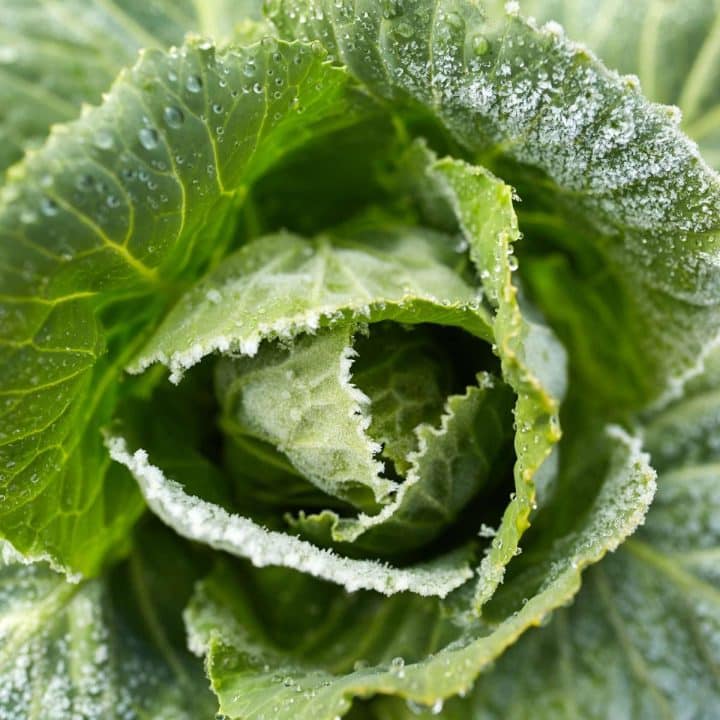
When it comes to winter seasonal foods, more vegetables thrive in cooler temperatures than fruits. This gives you a much more diverse array of flavors and textures to add to your homestead recipes. Root vegetables, winter squash and cruciferous vegetables make up the bulk of winter produce. Use them as a base for soups and casseroles.
Grow root vegetables, such as parsnips, carrots, beets and celery root, year-round for multiple harvests. They taste sweeter when harvested after a frost or two.
The same phenomenon that sweetens apples in cold storage occurs when root vegetables are in the ground during a frost. This prompts their starches to turn into sugar.
As the name suggests, winter squash is best in wintertime. There are many varieties, including delicata, butternut, acorn, and spaghetti squash. While they don’t benefit from a frost, most winter squash benefits from curing. Curing gives squash a shelf-life of up to 6 months, making it a great choice throughout winter.
Cruciferous vegetables like Brussels sprouts, cabbage, broccoli, and kale tend to be robust, cold-hardy crops. They continue to produce in cold, but not deep-freezing temperatures.
Like root vegetables, they taste best in the winter because they, too, benefit from the cold temperatures of a frost. Consider growing these in your winter garden.
Incorporating winter produce into meals
Incorporating winter fruits and vegetables into meals offers a delightful opportunity to infuse dishes with seasonal flavors and textures. While winter vegetables feature some of the most earthy, nutty flavors of the year, they are countered by the refreshing brightness of winter fruit, resulting in a balance inspired by nature.
Refreshing winter fruits
Incorporating winter fruits like citrus and pomegranates into salads, desserts and savory dishes brings a burst of brightness and complexity, adding a refreshing contrast to the heartier components of winter meals. Try adding a bit of lemon zest to roasted chicken with winter vegetables or serving a light and refreshing key lime pie for dessert instead of something heavier.
“I take advantage of using citrus, pears, pomegranates, persimmons and cranberries as much as possible. All of these fruits are perfect for salads and adding to baked goods. And many of them are tasty for simply snacking on.”
— Jere' Cassidy, One Hot Oven
Hearty root vegetables
The hearty nature of root vegetables makes them perfect for comforting stews, hearty soups and roasted medleys. Roasting root vegetables like carrots, parsnips and turnips brings out their natural sweetness, while adding them to soups and stews adds depth and heartiness. Their earthy flavors complement the cozy ambiance of winter meals, like shepherd’s pie, adding a satisfying touch to the dining experience.
“There is something so comforting about root vegetables! We try to use up as many as we can throughout the winter by roasting them in big batches with a little avocado oil and salt and then popping them into pasta, stir fry and even soups. It gives them such a delicious flavor.”
— Shelby, Fit as a Mama Bear
Winter squash
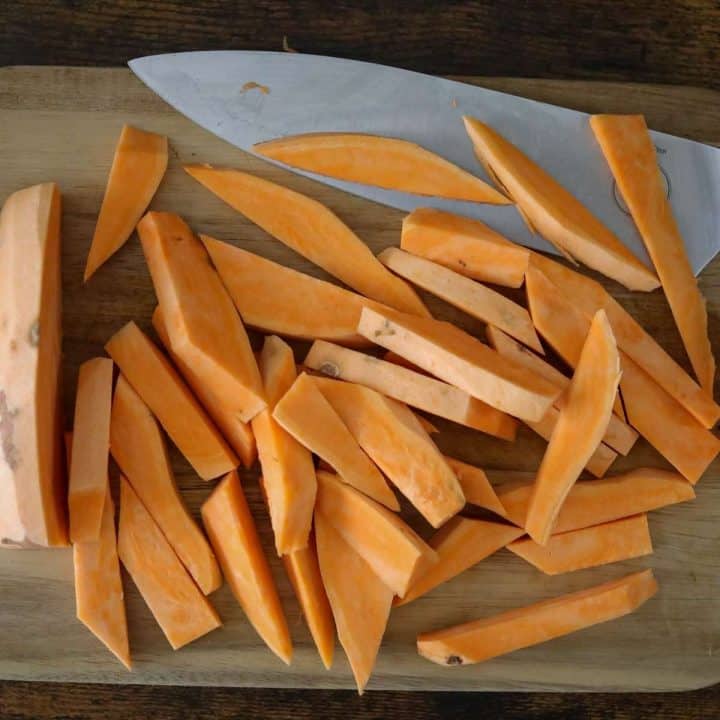
Winter squash varieties, such as butternut and acorn squash, lend themselves to many culinary possibilities. From creamy soups to savory casseroles, transforming these versatile vegetables into delectable dishes, like butternut squash ravioli, embodies the warmth and comfort of the season. Their rich, nutty flavors and velvety textures create a luxurious dining experience, while their vibrant colors add visual appeal to the table.
“I really like using spaghetti squash because it's so versatile. I can roast the whole squash and have it as a side dish or as a base for my favorite pasta sauce. Sometimes, I fry it in a pan to make spaghetti squash hash browns.”
— Sharon Rhodes, The Honour System
Cruciferous vegetables
Cruciferous vegetables, including broccoli, cauliflower, Brussels sprouts and kale, are known for their hearty textures and robust flavors. You can enjoy these versatile vegetables in various dishes, from simple sautés to complex, multi-layered culinary creations.
“One of my favorite ways to use leafy greens in the winter is to stir a handful of the leaves into soup! Spinach and kale — be sure to remove the bitter stems and just use the leaves — are my favorite. It doesn't have to be homemade soup, either - this is also a great way to add some produce into canned soup.”
— Anne Mauney, MPH, RD, fANNEtastic food
Winter seasonal foods
Embracing seasonal eating with winter fruits and vegetables get your vitamin C as well. From hearty root vegetables to vibrant cruciferous greens, the winter harvest provides a rich variety of flavors and textures.
By savoring the best winter seasonal foods, you make the most of the natural abundance of the season. You also connect with the land and the community. This creates a deeper appreciation for the ever-changing delights each season brings.
This article originally appeared on Food Drink Life.
Like this post? Save it, share it, and read it!
